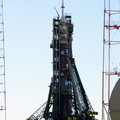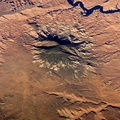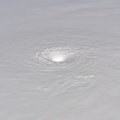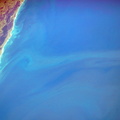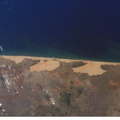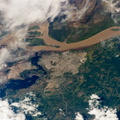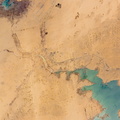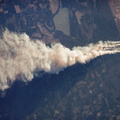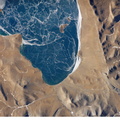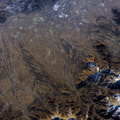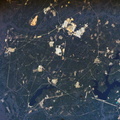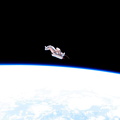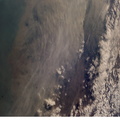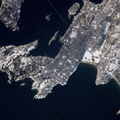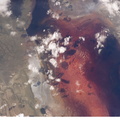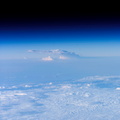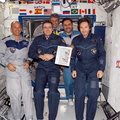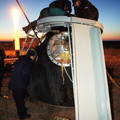
WIKIARCHIVES.SPACE
The Human Spaceflight Archive

Information
- Taken in
- Space
- Author
- NASA
- Description
- Lake Natron, Tanzania is featured in this image photographed by an Expedition 12 crew member on the International Space Station. This image of the southern half of Lake Natron shows the characteristic colors of lakes where very high evaporation occurs. According to scientists, as water evaporates during the dry season, salinity levels increase to the point that salt-loving organisms begin to thrive. Red-pigmented cyanobacteria produce the deep reds of the open water of the lake, and orange colors of the shallow parts of the lake. Numerous, near-white salt crust “rafts” pepper the shallowest parts of the lake. The lake is quite shallow (less than 3 meters) and varies in width depending on its water level, and in this image is about 10 kilometers wide. Fault scarps of the Great Rift Valley system of East Africa form parallel, north-south lines on the east side of the lake. Also part of the rift system is Gelai volcano, the slopes of which appear in the upper left corner. The four main environments typical of alkali lakes in East Africa are illustrated well in the image. The delta of one of two dominant streams that flow into the lake (bottom right) shows where fresh water enters the basin. Open water, salt flats with salt crusts, and mud flats succeed each other in a west-to-east progression towards the shallow side of the lake. Vast numbers of the pink Lesser Flamingo (2.5 million by one calculation) rely on Lake Natron as their only breeding ground in the Rift Valley. The flamingoes feed on the nutrient-rich cyanobacteria; as salinity increases the lake can support more nests. Threats to the salinity balance from increased fresh water influxes will come from projected logging in Natron watersheds and a planned hydroelectric power plant. Although development plans include construction of a dike at the north end of the lake to contain the fresh water, the threat of dilution is taken seriously in this breeding ground. The uniqueness of the habitat was recognized in 2001 when the Lake Natron basin was placed on the list of Wetlands of International Importance.
- Created on
- Wednesday 15 March 2006
- Albums
- ISS (WIP) / EXPEDITIONS / EXPEDITION 12
- Source link
- https://www.flickr.com/photos/nasa2explore/albums/72157634842026003
- Visits
- 14
- Rating score
- no rate
- Rate this photo
- License
- CC BY-NC-ND
- Modified by WikiArchives
- No (original)
- Downloads
- 0
Powered by Piwigo




















































